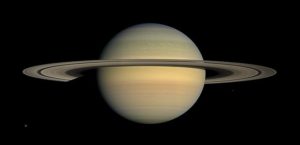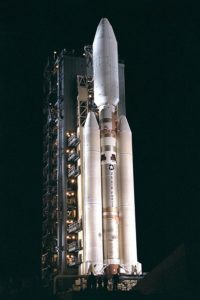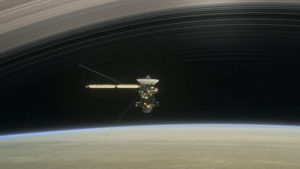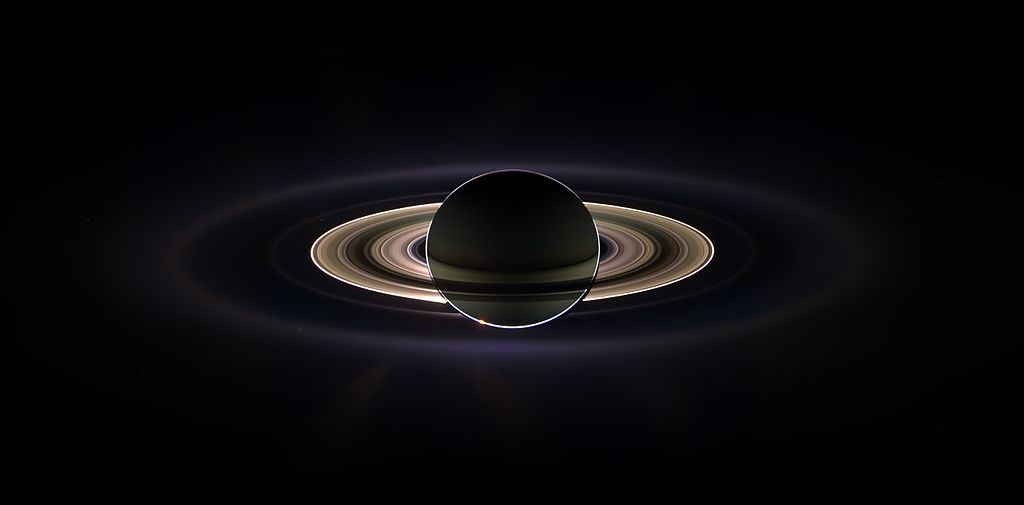At the time of this articles publication, the Cassini spacecraft should no longer exist – at this point in time it should have vaporized in the atmosphere of Saturn, the planet it was built to study and always destined to be a part of.
This is happening quite early in my time zone – a time I’m not generally awake for.. I could set an alarm, but given my schedule, it just isn’t worth it. Such is life.
To that end, I’m scheduling this post to publish at the time between Cassini’s probable demise in the atmosphere of Saturn, and the time that we get the final signal from the probe. I feel it fitting, to say the least.

Cassini is, as I think about it, the first spacecraft I recall from before it launched. I was 12 when it went up – certainly one hell of a rocketry and space fan, the fact it was launching on a Titan IV, a descendant of the Titan-IIIE that launched the Voyager probes 20 years beforehand, made it all the more awesome to me.
I remember people complaining that it had a nuclear power source, and fearing that, since the Titan’s were not the most reliable craft, that if it was to fail on launch the nuclear fuel would be blown all around the launch site. Of course, the storage for said fuel on the probe was built with this in mind, and could survive such an event, but try explaining this to the average anti-nuclear nut and see how far you get.
Of course, in October of 1997, Cassini launched on only the second Titan IVB to ever fly successfully, and began nearly 20 years in space, on what amounts to a mission that was effectively flawless beyond even its original best plans. Flybys of Venus, Earth, Jupiter, and finally its arrival at Saturn. Almost 300 orbits of the ringed giant, dozens of passes by its moons, countless discoveries about those moons and Saturn itself, and of course, it’s counterpart, the European Huygens probe’s successful descent onto the surface of the moon Titan: Ironically named the same as the vehicle which propelled Cassini-Huygens off of Earth to begin with.

Now, Cassini is a memory, still alive in the data stream coming from Saturn, to Earth. Data that takes 80 minutes at the speed of light to even get here. Of course, even after the last transmission, we will have tons of data to study in detail; puzzle pieces to add up, if you will, for us to understand Saturn, its rings, and its moons, as best we can until the next probe, using whatever is state of the art then, to study this gas giant in even more detail.
It’s funny, Jupiter has always been my favorite planet of study – in the 90’s I grew up loving new information from the Galileo probe. Saturn was kind of boring by comparison, but as I’ve grown up, and seen just how the Cassini mission was going after years of not really being able to pay as much attention as I would have liked to have with space and the like, what can I say: I’ve grown attached to it.

I hate to see it end, but I, like anyone else who understands these things, know why. We don’t want to risk the biological contamination to the moons of Saturn that could harbor life, or some predecessor to it. We want those worlds pure so that when we can check for life on them, we will know it’s native to that world and not something we accidentally deposited there.
Thanks, Cassini, for reminding me of just how interesting, and beautiful, Saturn really is. I always thought of it as rather boring, but you proved me wrong. Science doing what it does best, in a way, making people happy that they were wrong.

